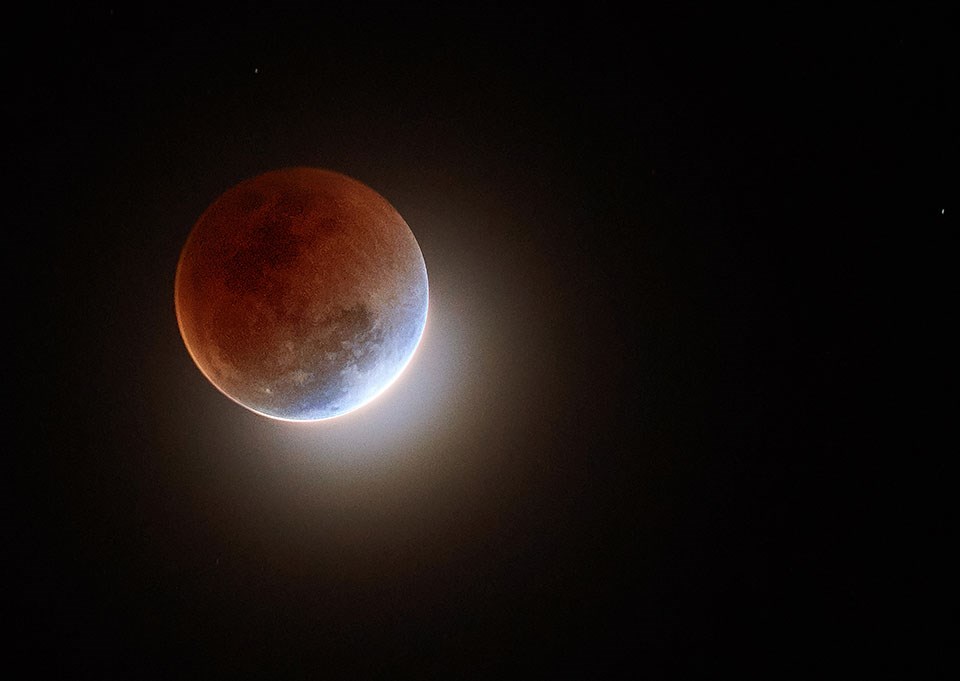A total lunar eclipse will be visible in Prince George Wednesday (May 26) morning.
Known as the super blood flower moon – the sun, Earth, and moon will line up perfectly to produce a total lunar eclipse.
Its intense name is because May’s full moon is known as the flower moon.
It is also a ‘super moon’ because the full moon is occurring when the moon is at the closest point to the earth’s orbit and it’s also a ‘blood moon’ because the moon turns red during the eclipse.
Hence – super blood flower moon.
Although it will be visible in Prince George during the early hours of the morning, you might want to take note because it will be the last supermoon total lunar eclipse for more than a decade.
While there are several total lunar eclipses in the years ahead, the Weather Network says the next definite supermoon total lunar eclipse won’t be Super Blood Harvest Moon in October of 2033.
Fortunately for Prince George, B.C. and the southern Yukon will have the best views of super blood flower moon in all of Canada.
The Weather Network says the penumbral eclipse begins at 1:47 a.m., and the umbra eclipse (the best time to start watching) starts at 2:44 a.m.
The Moon is fully immersed in the umbra starting at 4:11 a.m. PDT, reaches maximum eclipse at 4:18 a.m. and starts its exit from the umbra at 4:25 a.m.
From there, how much of the Moon exiting the umbra before it sets depends on your location. In Prince George moonset is at 5:02 a.m.
If you want to learn more about the eclipse before tomorrow morning the Prince George Public Library is hosting an info session through Canadian Planetariums on Zoom at between 6:30 p.m. and 7:30 p.m. tonight (May 25).
The free info session will give instructions on how to make a clearer view and what to look out for.
If you can’t see the super blood flower moon for yourself, you can always watch a livestream like the one hosted through the Griffith Observatory in Los Angeles which starts at 4:45 a.m. on the morning of May 26.



